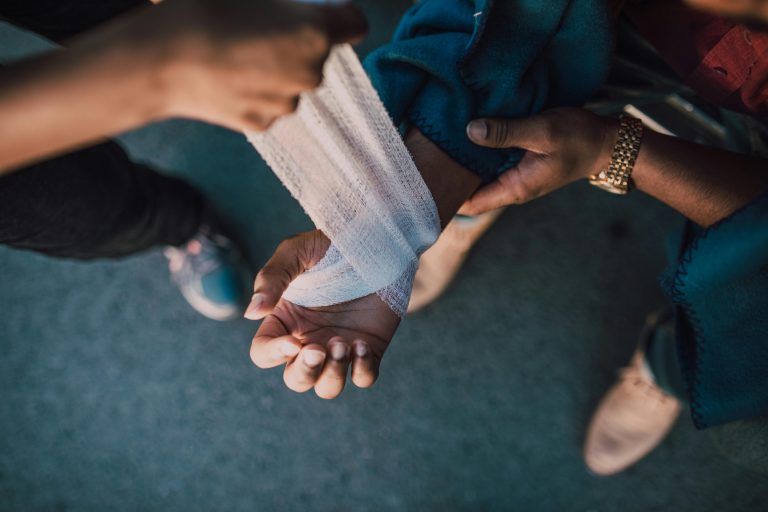Car accidents can be traumatic and unexpected events that may result in injuries to drivers, passengers, or pedestrians. Knowing essential first-aid steps and understanding what to do if you or other passengers are hurt can help minimize the severity of injuries and ensure prompt medical attention when needed.
Immediate Actions at the Scene of a Car Accident:
- Assess Safety: Ensure the safety of yourself and others by moving to a safe location away from oncoming traffic if possible.
- Check for Injuries: Assess yourself and passengers for injuries, including visible wounds, bleeding, or signs of distress.
- Call Emergency Services: Dial emergency services to report the accident and request medical assistance if injuries are present.
- Provide Aid if Safe: Administer basic first aid to yourself or passengers if it can be done safely, such as controlling bleeding, stabilizing head or neck injuries, or providing CPR if necessary.
First-Aid Steps for Common Car Accident Injuries:
- Cuts and Scrapes: Clean the wound with water and apply pressure to stop bleeding. Cover with a sterile dressing or clean cloth.
- Fractures and Sprains: Immobilize the injured limb using a splint or sling to prevent further movement and reduce pain.
- Head Injuries: Monitor for signs of concussion or traumatic brain injury, such as headache, confusion, nausea, or loss of consciousness. Seek medical attention promptly.
- Whiplash: Apply a cold compress to the affected area to reduce swelling and alleviate pain. Avoid sudden movements of the neck.
What to Do if You or Other Passengers Are Hurt:
- Stay Calm: Remain calm and reassure others to prevent panic and facilitate clear communication.
- Assess Injuries: Check yourself and others for injuries, prioritizing those that require immediate attention, such as severe bleeding, difficulty breathing, or loss of consciousness.
- Provide Comfort: Offer comfort and support to injured passengers while waiting for emergency responders to arrive. Keep them warm and reassure them help is on the way.
- Follow Medical Advice: Follow the instructions of emergency responders and healthcare professionals regarding further treatment and transport to medical facilities.
Post-Accident Follow-Up:
- Document the Incident: Take photos of the accident scene, vehicle damage, and any visible injuries for insurance and legal purposes.
- Seek Medical Evaluation: Even if injuries seem minor, seek medical evaluation to rule out internal injuries or delayed symptoms that may arise later.
- Follow Treatment Recommendations: Adhere to treatment recommendations from healthcare providers and attend follow-up appointments as scheduled.
- Report the Accident: Report the accident to your insurance company and comply with any legal requirements for documenting and reporting the incident.
Ready to learn more about first-aid essentials for car accidents? Book a consultation with IGAKU today. Our experts can provide personalized advice on understanding and implementing first-aid steps, and promoting safety for you and your passengers.
Read our other articles here.
- IGAKUhttps://igaku.co/blog/author/igaku/
- IGAKUhttps://igaku.co/blog/author/igaku/
- IGAKUhttps://igaku.co/blog/author/igaku/
- IGAKUhttps://igaku.co/blog/author/igaku/


